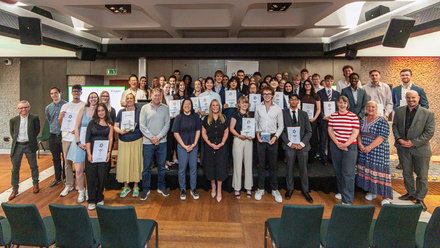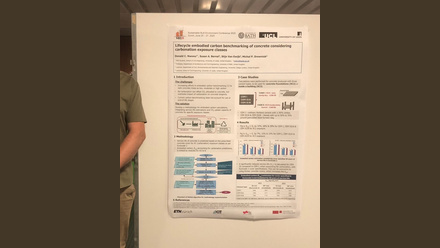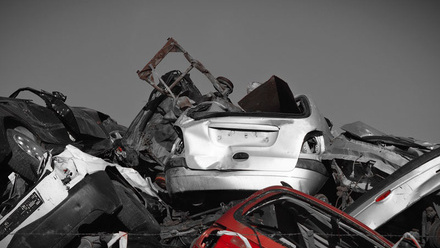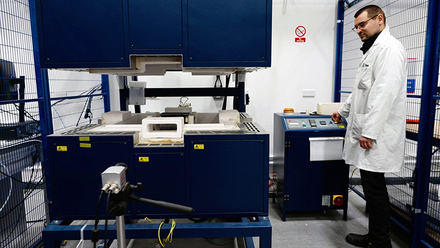Why equality isn’t enough
As Pride month reflects on the experiences of LGBTQIA+ people, Avery Cunningham AIMMM, Vice Chair of the IOM3 Pride Group and Director of Student Membership at oSTEM, talks about why we need to go beyond equality, diversity and inclusion.
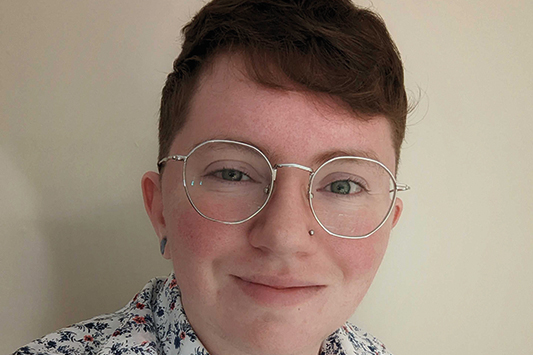
In recent years, there has been a growing recognition of the need for equality, diversity and inclusion (EDI) in STEM spaces. It seems to be embedding itself into everything we do now. Finally, we are at the stage of hearing those magic words. I am here to tell you why only considering these is not enough and we need to go further.
These EDI terms are often bandied around and used interchangeably, despite their distinct and different meanings. Furthermore, beyond EDI, we must also prioritise justice and equity if we want to address the root causes of underrepresentation of certain groups in STEM and what is often called the ‘leaky pipeline’ phenomenon, which refers to individuals from underrepresented groups dropping out of STEM at various stages of their education and careers.
Addressing the root causes is key. A lot of current work focuses on bringing diverse people into fields like Materials Science and Engineering, but neglects to consider how to support them once they are there. Obstacles such as a lack of access to resources and opportunities, implicit bias, discrimination, and lack of mentorship and support are significant factors contributing to the ‘leaky pipeline’.
What do we mean by equality, diversity, and inclusion?
Inclusion is the practice of creating a space and community where all individuals, regardless of their differences, feel valued, respected and included. By embracing inclusion, we recognise and appreciate the unique perspectives and contributions of every individual, fostering a sense of belonging and empowerment. Inclusive societies, organisations and communities not only benefit from a wider range of ideas and experiences, but also create a more equitable and just world where everyone has equal opportunities to thrive and succeed.
Diversity refers to the inclusion and representation of individuals with various backgrounds, identities and perspectives. It is important because it enhances creativity, innovation and problem-solving by bringing together a range of experiences and ideas. Embracing diversity fosters a more inclusive and equitable society, where everyone’s voice is heard and valued. It promotes cultural understanding, challenges stereotypes and biases, and ultimately leads to stronger communities and organisations that can adapt and thrive in an ever-changing world.
Equality refers to the principle of ensuring fairness and equal treatment for all individuals, regardless of their differences or characteristics. It emphasises that every person deserves the same rights, opportunities and access to resources without discrimination or prejudice. The idea is that everyone should be treated the same regardless of any of their characteristics. While this may seem like a laudable goal, it overlooks the fact that not everyone starts from the same place in terms of resources, opportunities and social capital. If we treat everyone the same way, often we are simply perpetuating existing inequalities.
Equity is a way to address this. It acknowledges that different groups have different needs and may require different levels of support to achieve the same outcomes. For example, allowing somebody to work from home a few days a week can make it easier for childcare, or reduce the effects of a disability on the individual’s ability to complete work. This is a specific thing that the person needs to succeed. Equity recognises that treating everyone the same is not enough if some people face systemic barriers to success.
To refer to a commonly used example, if you have three people of varying heights who need to see over a fence, an equal solution would be to give them each the same box to stand on. Although you have treated them equally, it does not mean they now all have equal access to be able to see over the fence. Equity would be dividing the boxes between the people, so everyone is at the same height.
Justice takes this a step further, recognising that different groups have been historically marginalised and disadvantaged, and seeks to redress these imbalances by addressing the root causes of social inequality. Simply giving everyone the same opportunities and resources is not enough if certain groups
have been systematically excluded from those opportunities and resources in the past.
To go back to our fence example, justice would do away with the need for handing out boxes by simply removing the fence. Although that is something that might cost more and take longer, it would be addressing the core issue, rather than a band-aid solution you would need to keep doing over and over.
Not to mention, the introduction of justice gives us the much cooler acronym JEDI to use in place of EDI!
Justice and equity
Ultimately, by prioritising justice and equity, we can create a STEM community that is not only more diverse and inclusive, but also more innovative and impactful. Where individuals from all backgrounds have equal opportunity to thrive and contribute to the advancement of science and technology.
However, this requires a willingness to acknowledge historical injustices and work to redress them, as well as a commitment to recognising and addressing the unique challenges faced by different marginalised groups.
When considering any kind of EDI/JEDI, intersectionality is key. Humans do not fit into neat categories. We do not contain ourselves within nice little boxes. We exist as a spectrum of our interacting identities. Much like how the world is not binary and exists in a spectrum. These combinations of identities, especially if marginalised, affect how we see the world and how the world treats us. I am all of my identities – I am bisexual, I am transgender, I am disabled and all of those interact. These, like other protected characteristics, are not always visible or easily identified. Things like gender identity, some disabilities and sexuality, among others, should not be assumed from sight.
Considering all of this is key also because equality is for all of us, or it is for none of us. If you want to do work, for example, to make your workplace better for women, but your work is not considering women that are not white, that are not straight, that are disabled, then you are actually only helping a very small subsection of women. People’s identities, among many other things, cannot be assumed to exist in a vacuum, and you must account for many different things when doing EDI/JEDI work.
This also is not a bad thing. All of these identities give me a benefit over others. Being transgender, I am not fazed by complex paperwork or a battle against administration, having weathered these many times before. Autism gives me the ability to see and communicate in ways that others do not. My bisexuality helps me recognise the spectrum of thought. My struggles with mental health, I hope, make me more understanding when managing other people, and helps me to recognise the importance of flexibility. Furthermore, I hope my open honesty about my own struggles means the people I manage feel they can be comfortable being openly honest with me too.
I am not asking anyone who reads this to join me in starting a revolution, but I am asking you to start committing revolutionary acts. These somewhat small acts are what snowballs into making real tangible change for the people that need it. Use your voice and privilege to advocate for others.
Do the people who sat on my interview panel know they committed a revolutionary act, in a time where transgender people, especially those working with youth, are dissected everywhere in the press? In a city where LGBTQ+ people working with school children have been subject to protests, did it even cross their minds? Or did they just recognise me as the best fit for the job.
Did my referees think about the fact they were using their reputations to vouch for me as a transgender person? They did something that could cause trouble, where safer options could have been chosen. They were, as I like to think about it, a little bit of a troublemaker.
When the status quo is an oppressive world, any changes to this are the act of a troublemaker. You do not make changes without causing some ripples. You must be the one who steps out of line. The one who introduces themselves with their pronouns when no one else does, the one who questions if by women we mean all women, who checks if the building we are meeting in is accessible, who suggests that the slides we are using should be made dyslexia friendly.
Be a bit of a troublemaker.


